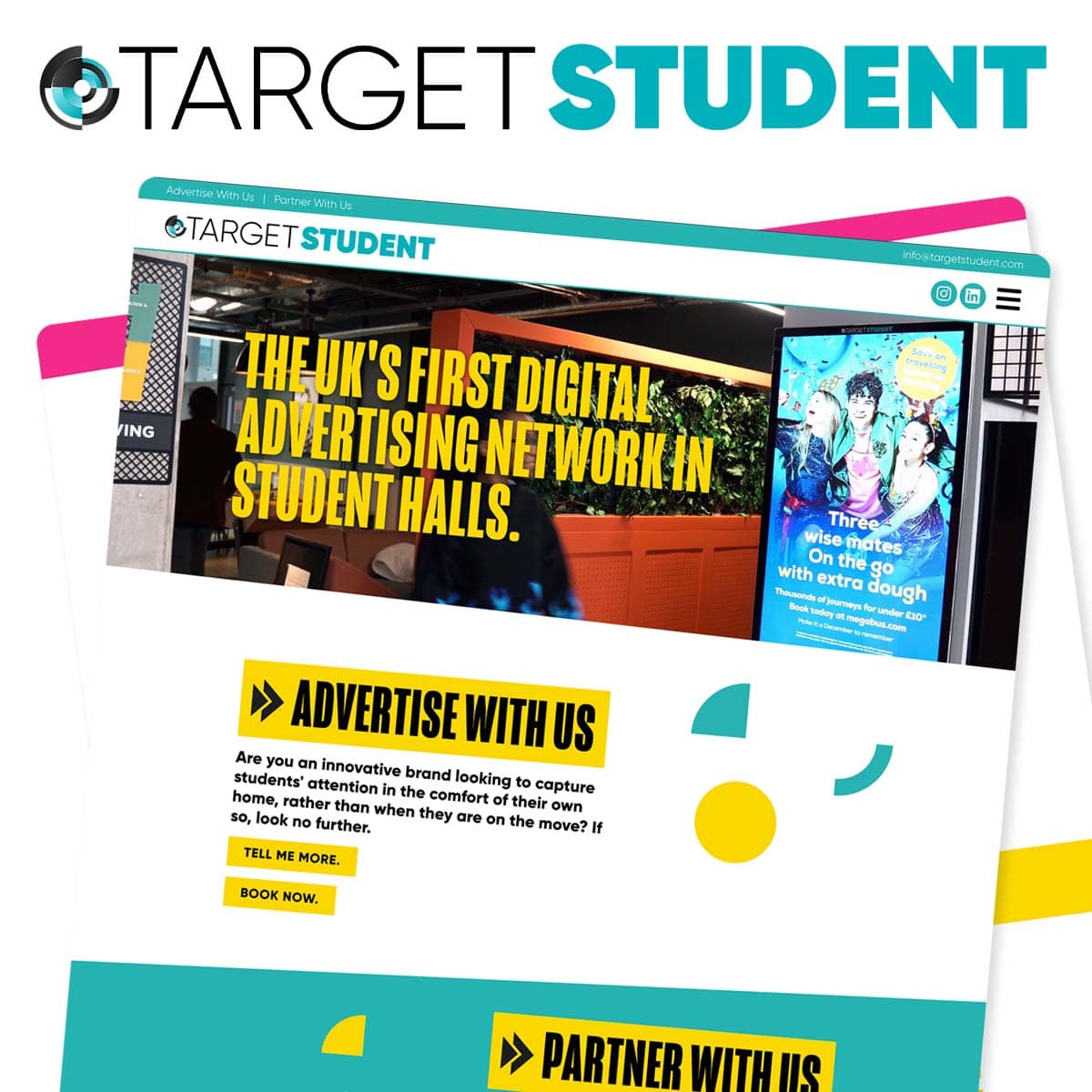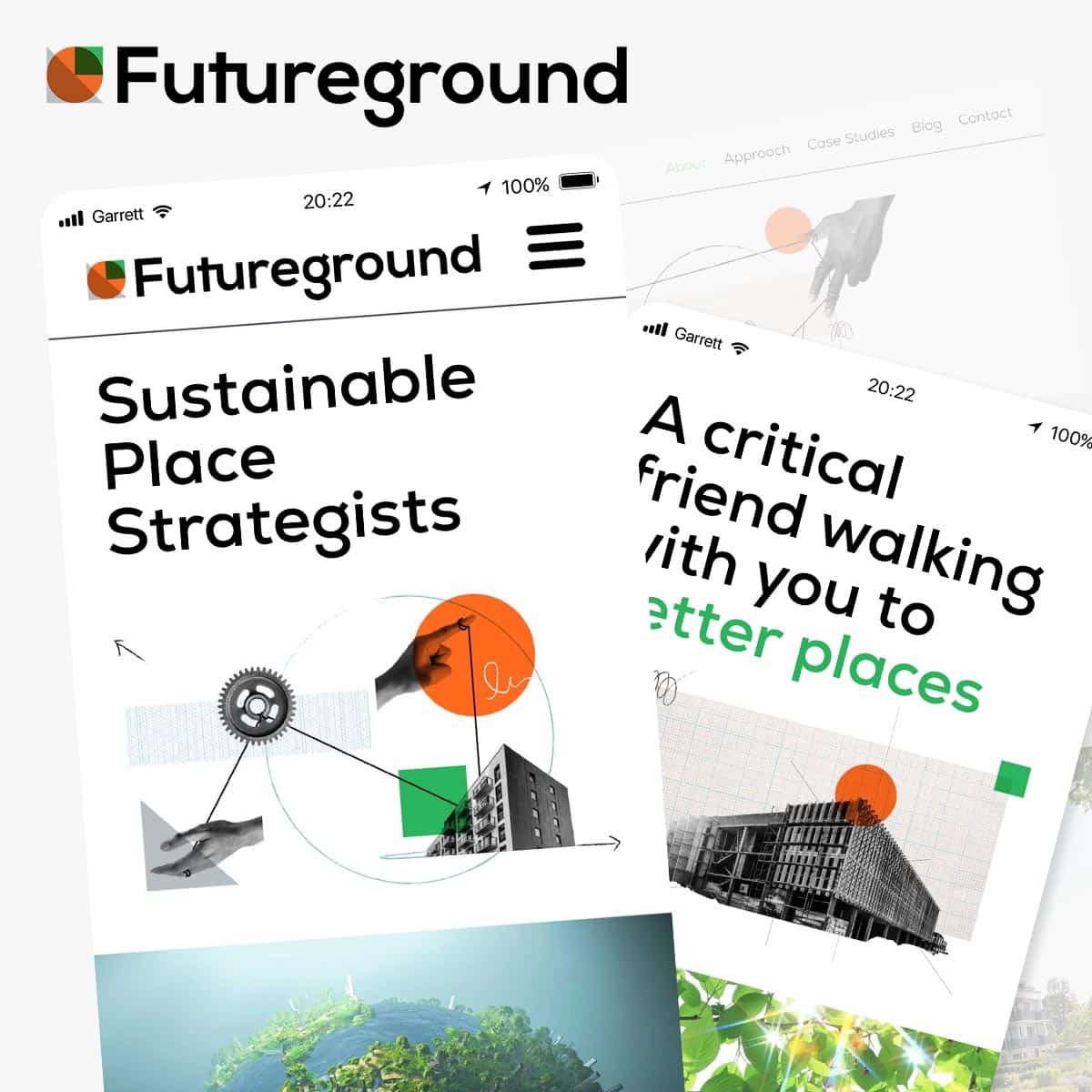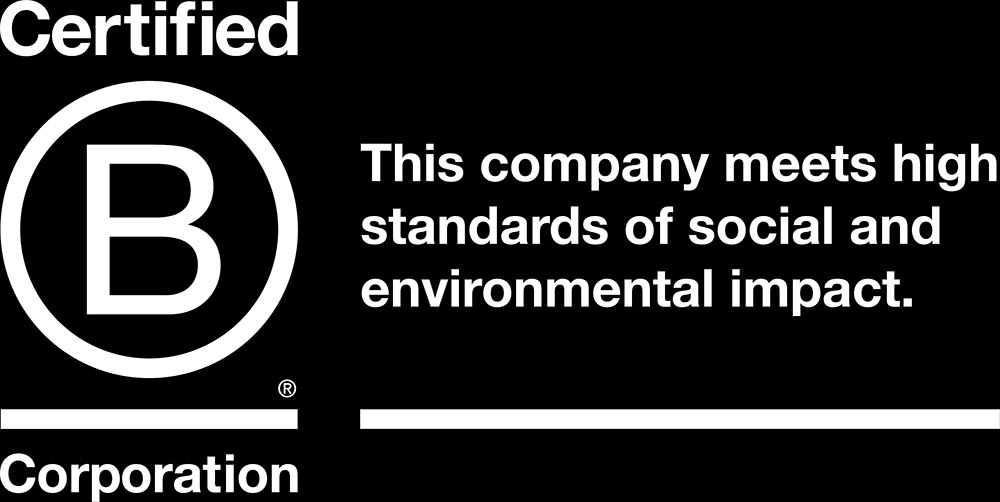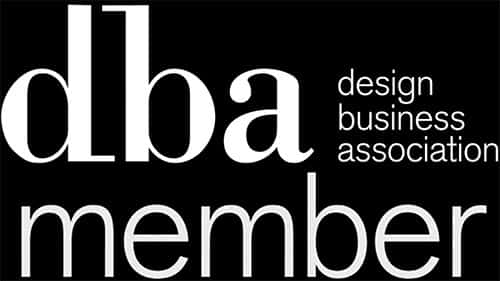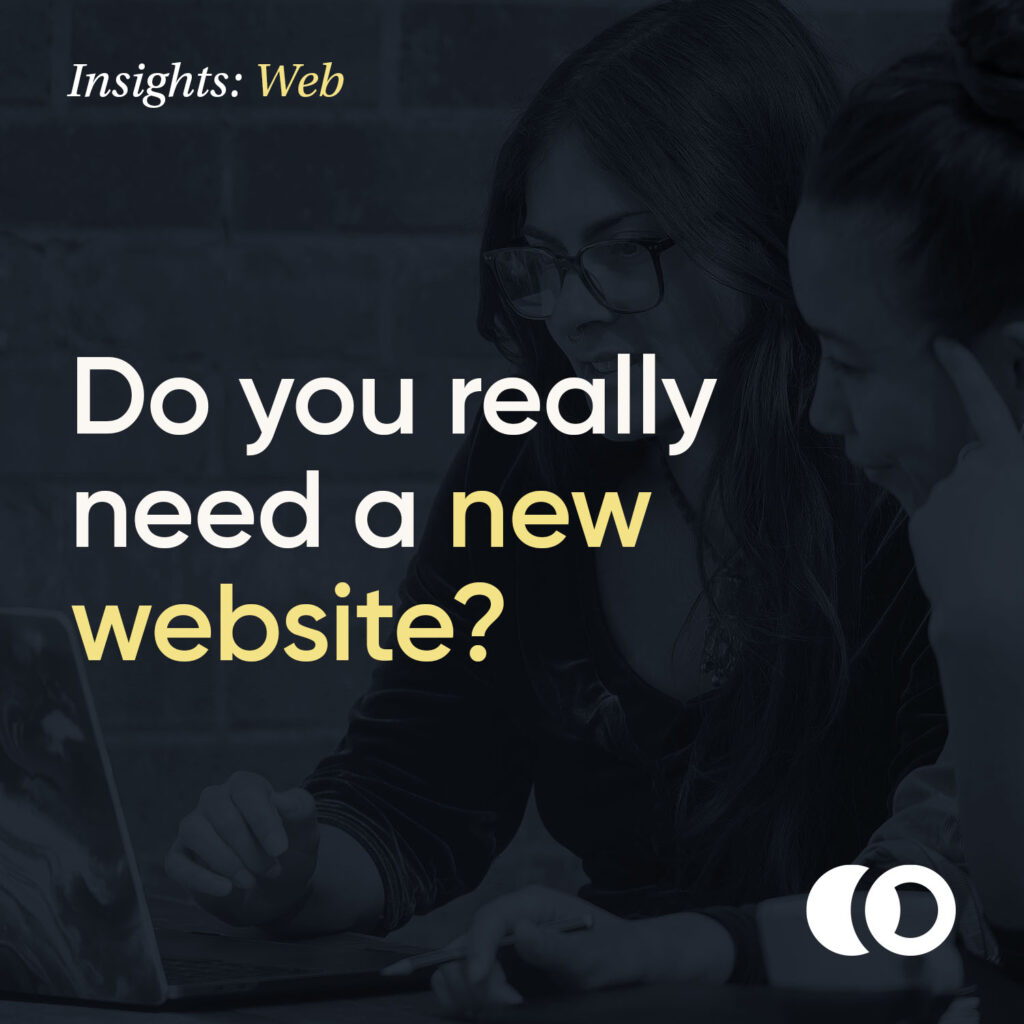
Blog Archive
Do you really need a new website?
Author: Ed Garrett – circa 10 minute read
Many of us want a new house, a new wardrobe, a new job, but do we actually need one? Websites are no different. But before starting this journey, you should ask yourself ‘does my website position me as an expert in my field, does it deliver the right leads into the business, does it speak directly to my target audience and provide them the information they need?’ It’s never a bad time to consider these questions, reflect on the health of your business and make those strategic decisions that will help your organisation to grow and succeed.
It’s common knowledge that most businesses and charities need a website. It is often the first thing that prospective clients and customers will look at when deciding whether to work with you; it can win confidence from the first glance till long after the client is won, funds are raised or the final purchase is made. Done right, your website can be the star performer in your marketing and sales team. But, although any decent agency or freelancer will always try to design a site that has a long shelf life, it’s inevitable that at some point it will need updating.
Look out for these clear warning signs that you need to seriously consider a website update or rebuild.
1. The really obvious stuff
First and foremost, are you embarrassed to show people your website? This may sound far too obvious to be covered here but you’d be surprised how often we hear this! If you’re sending people to your social media pages instead of your website this is a problem.
Also, are you able to easily access your website and effectively use the content management system to make simple updates to copy and images? This is a real problem if the answer is no! Maybe you’re no longer able to contact the person or company that designed it, maybe you are but you’re being quoted extortionate costs for what feels like basic maintenance.
Unless you’re a huge business with endless budgets or inhouse developers, websites will often need to be managed and maintained by the people that you have internally. Make sure this is made clear when you’re considering a rebuild, and that training is included (also see our point below about patchwork quilt).
2. The design looks and feels outdated
As we’ve already said, a good website designer should be able to create a site that will serve you for as long as possible. But inevitably there are trends in web design, whether that’s the infinite scrolling parallax sites that were all the rage in the mid 2010s, gratuitous use of sliders or the more recent minimalist designs.
If you haven’t updated your website in the last 2-5 years, there’s a real opportunity to do a full refresh to bring it right up to date, stay on trend against competitors and protect your brand for the future.
See how we redesigned the Target Student website (and brand), helping them to elevate their profile and secure essential investment into the business.
3. It’s become a patchwork quilt website
You know how it goes. You have your designer or developer create a new website. Everyone loves it… but then you need to add something. A new product necessitates new copy. You decide to launch events, which requires a banner on the home page. Your latest photoshoot produced more portrait images than landscape ones.
Before long you’ve got a patchwork quilt of a site combining different styles of visuals, not to mention copy written by a variety of different voices. Refreshing your website will allow you to create a more consistent brand image and focus the user experience for your visitors.
PS: To help combat the patchwork quilt effect, our website packages incorporate an in depth CMS training session at handover, and then refresher training over the first 6 to 12 months. This will upskill your team in how to maintain and update your site in keeping with your brand guidelines.
4. You’re in a place of change
Of course, your best bet is to get ahead of the game. We’d recommend making changes to your website before or during your transition as a business so you’re never left in the situation above. People often come to us for a new website in a period of growth – going from start-up to the more ambitious ‘step-up’, or step-up to full blown scale-up.
It’s really important that your website is relevant to where you are and to where you’re going. It needs to appeal to your current audience but also support your growth strategy for the next 2-5 years. That’s why every good designer or developer should be asking as much about your future plans as they do about your brand’s current situation.
5. You’re launching a new product or service
Clients often come to us to get their website updated when they’re preparing to launch a new product or service. This is a perfect time to look at all your marketing collateral, as the launch will hopefully generate a lot of new interest and you want to be sure you’re as ready as you can be.
A new product or service might also affect how your site needs to be laid out, or even the functionality. If you’re an ethical retailer and have decided to offer a subscription service, for example, you’ll need to build in those capabilities.
6. It doesn’t reflect your brand today or customers of tomorrow
Even if your website still looks fairly fresh to the outside eye, it may be that it no longer represents you as a business or organisation.
Maybe you created it on a budget in your early startup days, and now you’ve grown as a brand, added new services, and need a site that reflects your new place in the world. Or you’ve refined your purpose, mission and values, and need your website to communicate your adjusted positioning in the market
If your website feels like your brand two years ago, it’s time to consider at least going through an overhaul process, if not a full redesign.
See how we redesigned the Futureground website (and brand), helping them to grow the business and diversify their client base. Full case study coming soon.
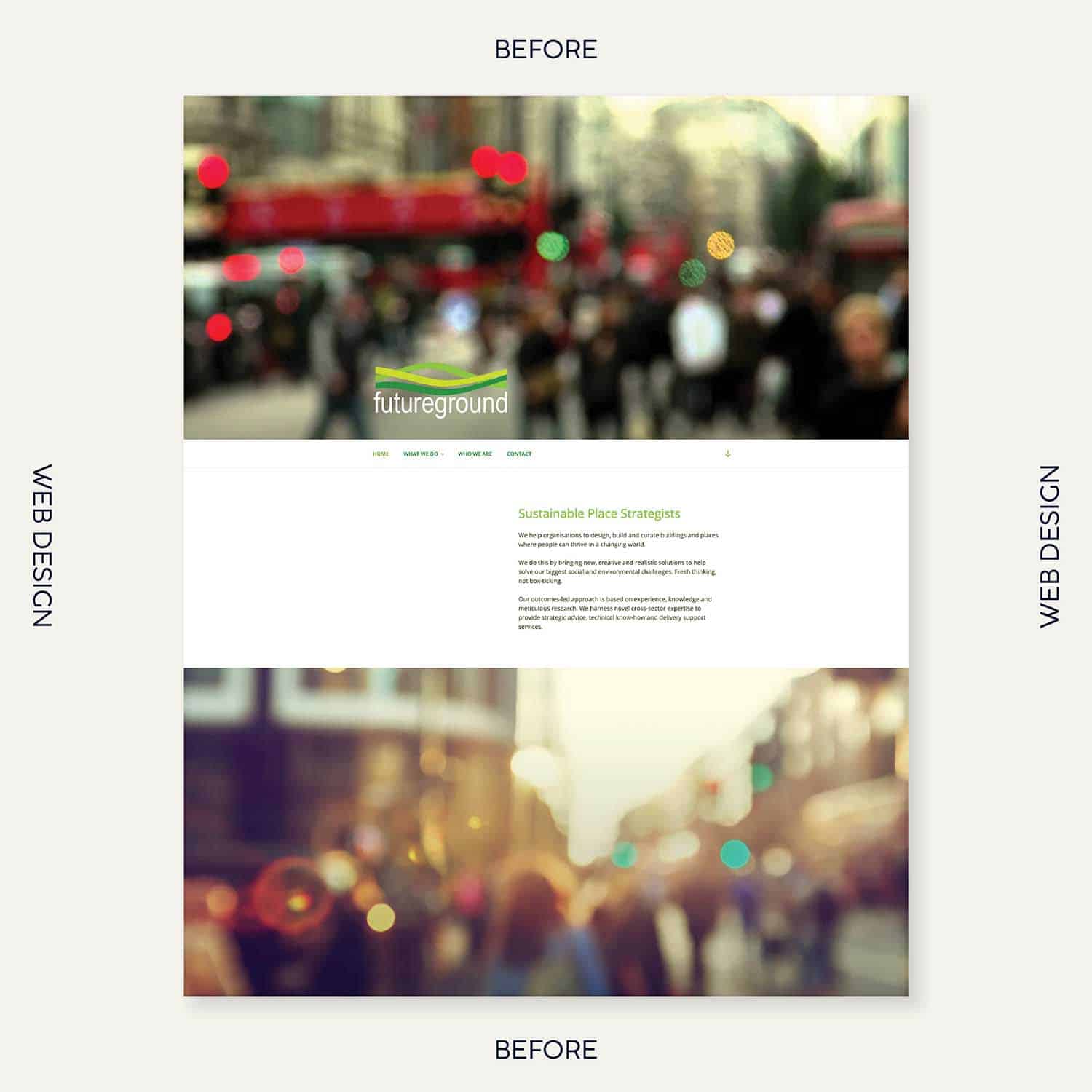
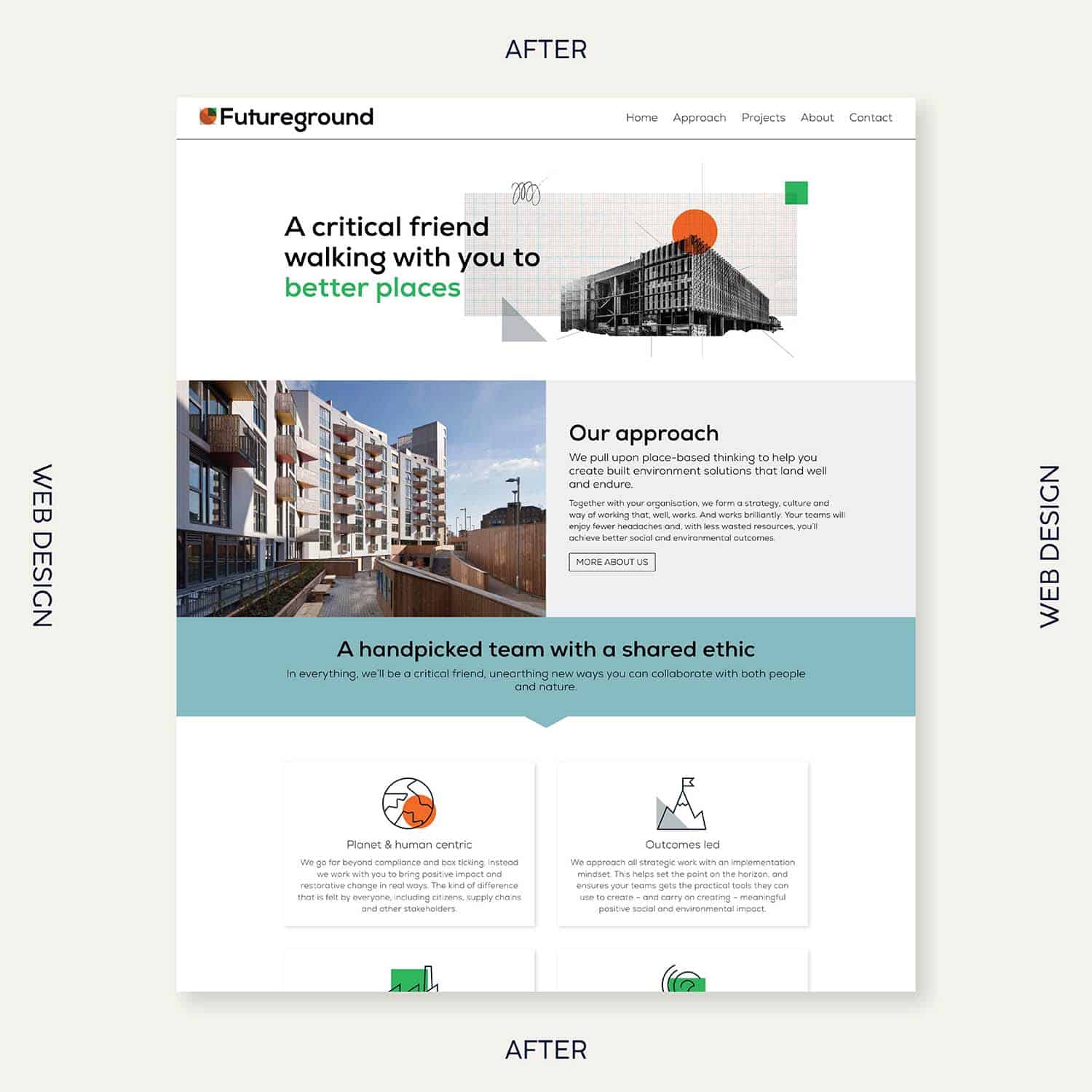
7. The website isn’t working for your users
Websites need to work for the people who visit them – and we put a lot of our energy into ensuring they do. If you’re uncertain whether your website is working for your users, check out our blog post titled ‘Does your website work for your customer?’.
User friendly means lots of things in the context of website design. It means easy to navigate, with clear signposting to help people get to what they need. It means accessible to all – including those with impaired sight or hearing, for example. And it means solving problems more than selling.
If your website isn’t firing on all of these cylinders, there’s a huge opportunity to improve it – and see improved results for your business or organisation at the same time.
8. Your audience has changed
Many businesses take time to work out exactly what they do and who they do it for. There might be several iterations and mini pivots before they settle on a final direction. You may have started out aiming at a B2B audience but have now realised there’s an adjacent opportunity in the B2C market, for example.
Because your audience should be a key factor in how your website looks and functions, if that audience has changed – or you want it to – then your website will need to change with it.
As per the information below below, make sure that when you consider your audience, you think about the future too. Who do you want to be working with a year from now? Build that thinking into your design strategy.
Moving forward and future proofing
If your website isn’t quite hitting the mark on any of the elements above, it’s time to talk to your website designer.
It may be that a full overhaul is required – perhaps including new branding – or there could be some more subtle updates that will refresh your look sufficiently. For example, you could swap out the photography, update colours or copy, or add new icons or illustrations.
Whatever the case, make sure that you don’t just get it ready for today – protect it for the future and you’ll save yourself a lot of time, effort and budget. This means, among other things, having a clear, future-facing strategy, putting your users at the centre of your decision-making, doing your research, and investing in an accessible CMS (Content Management System).
At The Discourse, we have been designing incredible brand identities, websites and content marketing campaigns for well over 5 years. We’ve proven that organisations that embrace brand, the web and content are more successful over the long term. Our clients typically spend from £5k to £20k on brand strategy and design, website projects range from £5k to £20k depending on size and functionality.
If you’re ready to take your brand to the next level, you can get in contact today via our contact page or by emailing us at [email protected].


